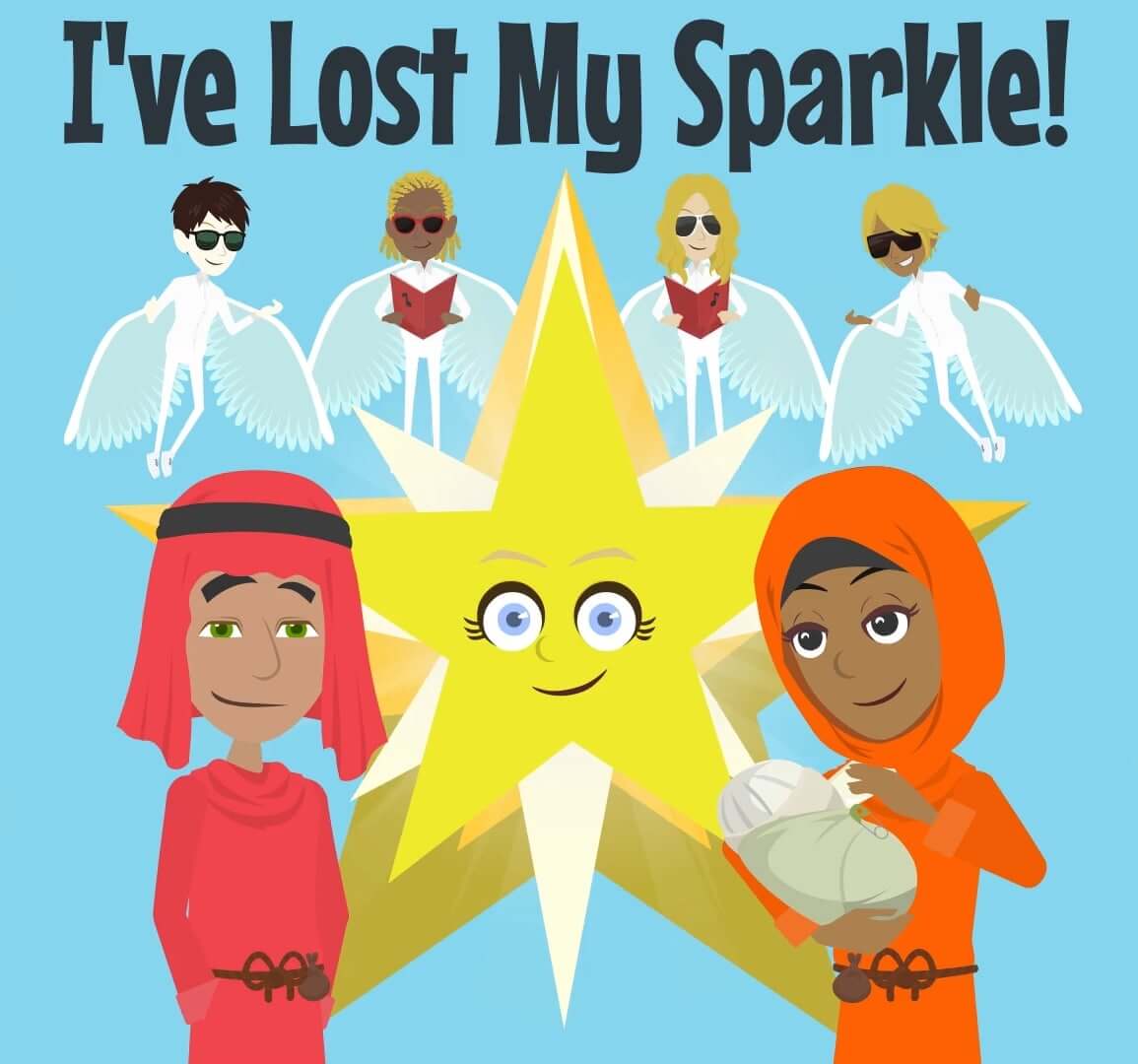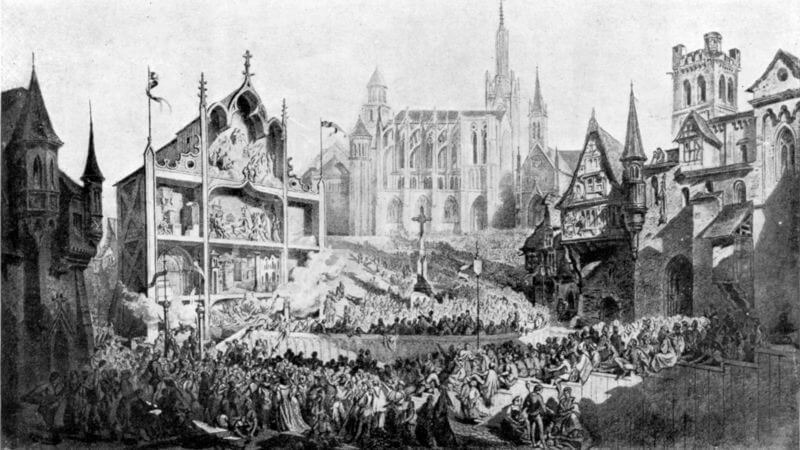History of the Nativity Play
The Origin of the Word “Nativity”
The dictionary definition of the word “Nativity” according to Merriam Webster is :
Nativity is one of many words born of the Latin verb nasci, which means “to be born.” The gestation of the word was a long one. “Nasci” developed in Latin into nativitas, meaning “birth,” which passed through Middle French as nativité before entering English in the 14th century. “Nativity” has many siblings and cousins in our language; other terms of the lineage of “nasci” include “cognate,” “innate,” “nascent,” “native,” and “renaissance.
The word nativity has become synonymous with birth of Jesus in the Christian religion, although it can in-fact reference the occasion of anyones birth, and to most people represents the Christian festival of Christ’s birth, a crib surrounded by nativity figures or a nativity play.
- Nativity Play
The Origin of the Nativity Play
If you grew up in the United Kingdom you have probably taken part in a nativity play at school when you were younger. It’s a right of passage for most children in early years education, their first taste of the limelight on the stage. Always cute to watch and often, inadvertently, hilarious the nativity play detailing the story of the birth of Jesus is a tradition that most of know, whether we are religious or not.
There are several different ideas about where the concept of a nativity play originates. Some have argued that the genesis of the modern nativity play dates back to the Byzantine church of the seventh century. The Bishop of Jerusalem wrote hymns based around what could be called the nativity story featuring Mary and Joseph. This was however nothing like a modern nativity play.
St Francis of Assisi
It has now been established that the first nativity play that would be recognisable in modern times was produced by none other than Saint Francis of Assisi in 1223. Although nativity stories have been told since early medieval times in the form of ‘Mystery Plays’ this is credited as the inspiration for the plays that are produced in schools all over the UK to this day.
- St Francis of Assisi
St Francis wanted to discourage the local populace of Greccio, a hill-town in the Lazio region of Italy, from making the pilgrimage to the ‘Holy Land’ as Bethlehem was at that point controlled by the Turks. Remembering his own visit to Bethlehem he came up with the idea of presenting a live crib scene, much like one he had seen, that could be visited by the locals on Christmas Eve.
The villagers were invited out to a cave near the town, where St Francis presented a sermon in front of a manger with a baby, a donkey and an ox. He told the story of the birth of Jesus and according to his biographer St Francis was overwhelmed with love and happiness, as were the locals. This sermon was so popular it was performed year on year, becoming a Christmas Eve tradition, with each performance featuring more and more locals taking part, reenacting the story of the sermon. There were even tales told of the hay that St Francis used now having the magical power to heal sick animals. Word spread fast and the tradition grew.
Mystery Plays
Religious drama flourished in medieval Europe, as monks sort ways of spreading the Christian message. However as they were mostly performed in Latin the general population found these plays difficult to follow. Pope Innocent III, who suspicious of the the plays growing popularity, wanted to keep the peasants at arms length and decreed that clergy could no longer take part in or write such drama.
- Mystery Play by August Migette
This inadvertently led to a massive increase in the popularity of religious drama as local town guilds took on the responsibility for the plays and changed the texts from latin to their local languages. It was much more in line with St Francis of Assisi’s original concept as he too presented his original nativity sermon in the local language, deeming Latin much less accessible to the normal people.
The Mystery Cycle of plays in York placed a lot of focus on the story of Jesus’ birth, in Germany ‘crib plays’ started to be performed, Belgium religious puppet theatre grew and even in South America ‘Shepherds Plays’ started to be performed.
The Nativity in the Christian Bible
Most Christian scholars agree that the current story, as played out in schools and churches, is not entirely accurate when cross referenced with the first biblical descriptions. The first mentions of the birth of Jesus were written down in the Gospels of Luke and Mathew, around eighty years after the birth of Jesus. Both books say that Jesus was born in Bethlehem during the reign of King Herod. Luke’s Gospel mentions the shepherds and that there was ‘no room at the inn’, so Jesus was placed in a manger. Mathew’s Gospel talks of the Three Magi or “wise men” who visited the scene. There is, however, no mention of animals being present at all.
The Nativity in Modern Times
In the UK it is traditional for primary school pupils, usually reception class and lower key stage one, to perform a nativity recreating the scene of Jesus’ birth. The story generally how Jesus, Mary and Joseph were visited by three kings (or wise men), angels and shepherds, with all the parts performed by children.
- Silly School Education Nativity
The need for primary schools to include pupils of different faiths has lead to a large rise in the amount of secular plays produced each year, mostly based around the Christmas season. This has in turn led to a decline in performances of traditional christian nativity plays in recent years but they are still very popular, especially amongst Christian orientated schools and Sunday Schools.
Nativity Plays for EYFS & KS1
Silly School Education nativity plays for primary schools are always full of fun, with a brand-new take on the classic Christmas story. Perfect for children in EYFS and KS1, these Christmas plays have everything you need to put on a fantastic show. Whether it’s Angel the Star who has lost her sparkle, The Silly Shepherds who always get lost or The Three Kings, who are out of present ideas, a Silly School Education play will make your primary school’s Christmas performance one to remember.
- Silly School Education




